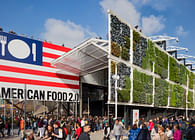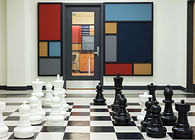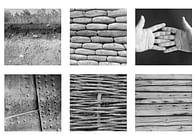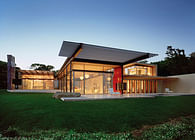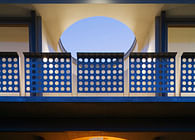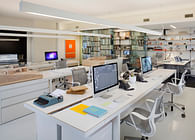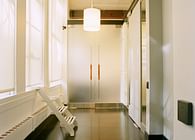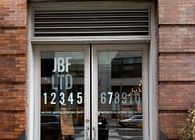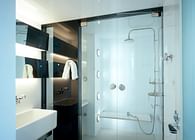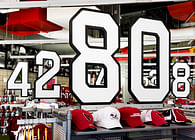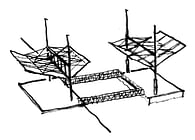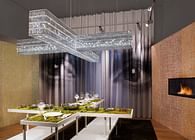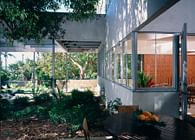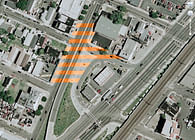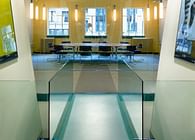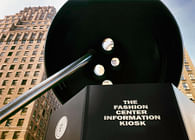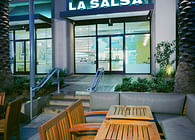
New York, NY
At the Koch Institute for Integrative Cancer Research Biber Architects has just completed its first project for MIT, a new public gallery at the new Koch Institute building. The Institute opened on March 4 with a series of events to celebrate the new building, the new Institute and the new public galleries. The galleries are the public face of the Institute, lining Main Street with 300’ of glass facade and a linear hall providing an alternative route during the worst of Cambridge’s weather.
The Institute has created the remarkable mission of combining Life Scientists with Engineers to create nanotechnological delivery, monitoring and detection of cancer in its various forms. Led by renowned researcher Tyler Jacks, Ph.D., the Institute now inhabits its new 365,000 square foot building in Kendall Square, the heart of the biotechnology community in Boston.
Cancer is the most frightening word in the English language. The galleries diffuse this fear with information, engagement, positive stories of the remarkable research being done.
The Public Galleries create both a public exhibition viewable at a quick walk, or a car’s pace from Main Street, as well as an engaging and information filled experience for those with time to devote to the displays. Reflecting the dual nature of the core Institute idea, half the galleries feature round images (reflecting the more organic Life Sciences) and half are rectangular (showcasing the Engineering component of the collaboration). These leitmotifs come together at the central entrance to the Koch’s lobby, where a ‘Portal’ creates a palpable transition to the working Institute.
The Portal features a nearly 30’ wide mosaic tile floor picturing a map of the Kendall Square and MIT area the Koch is centered within. The map, along with the listing of donors and a timeline of cancer research at MIT are a dark, rich warm black/brown color in contrast with the bright and colorful Koch. The effect is a strongly emphasized entry sequence lined with historical and contextual information. The timeline is, like the galleries, divided into Life Sciences (a sinuous curved line) and the Engineering history (an orthogonal line) starting at the founding of MIT 150 years ago and culminating in the Koch today. The timescale expands to reflect the increasing activity over the past decades, compared with the slower pace in the late 19th and early 20th centuries.
The Faces of Cancer is a 12 screen media display featuring video portraits of researchers, cancer patients, donors and MIT leaders in a mosaic of faces and colors that dissolves into a large multiscreen single interview at regular intervals.
The Russell Gallery to the east of the central entry, features a series of five glass cases, each suspended on thin rods, containing artifacts and a video bottom panel displaying an animated loop of a specific research project at the Koch. These contained stories illustrate the 5 research areas the Koch has defined as the paths to the eventual cure for cancer.
The 5 vitrines sit in front of a monumental scale wall artwork by artist Casey Reas, generated from research data sets from the Koch. The art forms a highly figural backdrop to the transparent cases and another street-scale image to define the Koch.
Perhaps the most arresting displays at the Koch Institute are the 10 enormous round and square color photomicroscopy backlighted images. The sheer scale, at nearly 8 feet in diameter, and the shapes and lighting project highly detailed images to the visitors and to the public outside. On the one hand they are treating science as art, and on the other are supplemented by detailed captions and online information bringing meaning to the arrestingly beautiful images.
The Koch Institute Public Galleries displays act both as exhibits to the visitor and Identity pieces to the public at large. The image it establishes is projected to the community, to the neighborhood and to the world.
Status: Built
Location: Cambridge, MA, US
